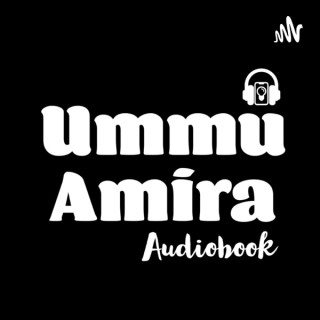Podcasts about ayat
- 479PODCASTS
- 8,741EPISODES
- 48mAVG DURATION
- 1DAILY NEW EPISODE
- Dec 8, 2025LATEST

POPULARITY
Categories
Best podcasts about ayat
Latest news about ayat
- '10 kadam door...': Salman Khan lashes out, warns paps to stay away from niece Ayat at Mumbai event; watch Latest News - Aug 11, 2025
- Salman Khan turns PROTECTIVE 'mamu' for Ayat during...; sweet moments with nephew Nirvaan go viral [Watch video] Bollywood News and Gossip | Bollywood Movie Reviews, Songs and Videos | Bollywood Actress and Actors Updates | Bollywoodlife.com - Aug 11, 2025
- Aayush Sharma undergoes two back-to-back surgeries, shares update: “Good health isn’t just about a six-pack. It’s about what’s happening inside” Latest Bollywood News | Hindi Movie News | Hindi Cinema News | Indian Movies | Films - Bollywood Hungama - Jun 25, 2025
- The Power of Ayat ul-Kursi: A Shield of Divine Protection Creativity on Medium - May 20, 2025
- A Top Palestinian Restaurant From New York City Will Open an Outpost in Richardson Eater - Apr 18, 2025
- Signs Of Allah Everywhere We Turn – An Invitation To Reflect MuslimMatters.org - Jan 24, 2025
- Allah SWT berfirman dalam Al-Qur'an surat An-Naas ayat 4-6: Deep Learning on Medium - Oct 15, 2024
- Ganesh Chaturthi 2024: Salman Khan Performs Aarti With Niece Ayat NDTV News - Special - Sep 8, 2024
- Berdosa ‘troll’ guna ayat al-Quran walaupun atas tujuan hiburan Malaysia - Astro Awani - May 27, 2024
- Restaurants outside of Palestine and Israel are being attacked in protest of the war The Conversation – Articles (UK) - Feb 28, 2024
Latest podcast episodes about ayat
Nov. 25: Friendsgiving with Ayat Restaurant Co-Founder CEO Abdul Elentanani
The head of the popular Palestinian restaurant talks about the Thanksgiving meal they are holding in Astoria, Queens and why the restaurant chooses to publicly embrace its Palestinian identity.
Nov. 25, 2025: Mamdani Transition Committees, Flushing Says No to Casino & an Ayat Thanksgiving
In our first segment, we speak to City & State Editor Peter Sterne about who Mayor-Elect Zohran Mamdani selected for his transition team. He explains what role these committees might play in helping him staff his administration, along with setting policy goals. In our second segment we talk to Sarah Ahn and echo - two Flushing Workers Center organizers. We discuss why they oppose billionaire Mets owner Steve Cohen's push to open a casino in their working class Queens community. In our final segment we tune into gratitude and the spirit of giving with Palestinian restaurant owner, Abdul Elenani. We talk about a Friendsgiving meal event at Ayat in Astoria, Queens and why he believes in embracing his culture and identity through food.
Kajian Sunnah Surah Al Hijr Ayat 96 - Selesai Al Ustadz Abdul Malik Hafizhahullah
Bab tantangan dalam berdakwah dari Buku Tafsir Ibnu Katsir
Kajian Sunnah Surah Al Hijr Ayat 93-95 Al Ustadz Abdul Malik Hafizhahullah
Bab tantangan dalam berdakwah dari Buku Tafsir Ibnu Katsir
Tafseer of Ayat an-Noor - Explanation of the Verse of Light | Dr Zohair Abdul-Rahman
Jumuah khutba 14 Nov 2025
Kajian Sunnah Surah Al Hijr Ayat 89-92 Al Ustadz Abdul Malik Hafizhahullah
Bab tugas para tiduk afk pemberi peringatan dari Buku Tafsir Ibnu Katsir
Kajian Sunnah Surah Al Hijr Ayat 88 Al Ustadz Abdul Malik Hafizhahullah
Bab rendah hati terhadap orang-orang yang kurang mampu dari Buku Tafsir Ibnu Katsir
Kajian Sunnah Surah Al Hijr Ayat 87 Al Ustadz Abdul Malik Hafizhahullah
Bab keagungan Al Qur'an dari Buku Tafsir Ibnu Katsir
Kajian Sunnah Surah Al Hijr Ayat 84-86 Al Ustadz Abdul Malik Hafizhahullah
Bab Allah subhanahu wata'ala maha kuasa atas segala sesuatu dari Buku Tafsir Ibnu Katsir
Kajian Sunnah Surah Al Hijr Ayat 81-83 Al Ustadz Abdul Malik Hafizhahullah
Bab pendustaan kaum nabi Sholih 'alaihissalam dari Buku Tafsir Ibnu Katsir
- with Dr Ayat Mekki - Healing the Past, Trusting the Present, Understanding Your Triggers, and Creating What You Truly Want
Y all, this conversation lit me up. Dr Ayat Mekki is one of those women who speaks and you instantly feel your whole body soften, straighten up, and lean in. She shares so much wisdom on emotional healing, subconscious patterns, and manifesting in a way that feels like someone finally turned the lights on. Talking to her reminded me that we all have these old stories running in the background, and the second we see them clearly, things start shifting fast.We also got into why chaos can feel familiar, why peace can feel almost too quiet, and how we repeat the same relationship patterns until we learn what we are meant to learn. I felt seen, called in, and weirdly comforted. I think you will too.Highlights:(01:45) Medical doctor to subconscious healer(06:12) The real meaning of manifestation and why it is not about wishful thinking(14:40) Clues that childhood wounds might be steering the show(23:01) When peace feels uncomfortable and why your nervous system reacts that way(34:10) What generational patterns look like and how healing affects seven future generations(47:15) The biggest lesson Dr Ayat took away from hosting her retreatFind out more about Dr. Ayat Mekki:Website LinkedInInstagram: @dr.ayat.mekkiQualia Mind - click hereCoupon Code: SHOCKANDYALL (15% off any purchase)Visit Nicole's on demand fitness platform for live weekly classes and a recorded library of yoga, strength training, guided audio meditations and mobility (Kinstretch) classes, as well: https://www.sweatandstillness.comGrab Nicole's bestselling children's book and enter your email for A FREE GIFT: https://www.yolkedbook.comFind Nicole on Instagram:https://www.instagram.com/nicolesciacca/Tik Tok: https://www.tiktok.com/@thenicolesciaccaFacebook: https://www.facebook.com/nicolesciaccayoga/Youtube:https://www.youtube.com/channel/UC1X8PPWCQa2werd4unex1eAPractice yoga with Nicole in person in Santa Monica, CA at Aviator Nation Ride. Get the App to book in: https://apps.apple.com/us/app/aviator-nation-ride/id1610561929Book a discovery call or virtual assessment with Nicole here: https://www.calendly.com/nicolesciaccaThis Podcast is proudly produced by Wavemakers Audio
Kajian Sunnah Surah Al Hijr Ayat 75-80 Al Ustadz Abdul Malik Hafizhahullah
Bab kedzoliman kaum nabi su'aib 'alaihissalam dari Buku Tafsir Ibnu Katsir
Tafsir Surat Al Fath ayat 18-26.Kajian Tafsir Al Qur'an ahlus sunnah wal jama'ah bersama ustadz DR. Firanda Andirja Abidin, Lc., M.A. hafizhahullahu.Sumber audio: Youtube.
Kajian Sunnah Surah Al Hijr Ayat 69-74 Al Ustadz Abdul Malik Hafizhahullah
Bab azab yang ditimpakan kepada kaum nabi Luth 'alaihissalam dari Buku Tafsir Ibnu Katsir
Tafsir Surat Ghafir ayat 4-9.Kajian Tafsir Al Qur'an ahlus sunnah wal jama'ah bersama ustadz DR. Firanda AndirjaAbidin, Lc., M.A. hafizhahullahu.Sumber audio: Youtube.
Kajian Sunnah Surah Al Hijr Ayat 66-68 Al Ustadz Abdul Malik Hafizhahullah
Bab makar kaum nabi Luth 'alaihissalam dari Buku Tafsir Ibnu Katsir
Kajian Sunnah Surah Al Hijr Ayat 59-65 Al Ustadz Abdul Malik Hafizhahullah
Bab tamu-tamu nabi Luth 'alaihissalam dari Buku Tafsir Ibnu Katsir
Kajian Sunnah Surah Al Hijr Ayat 57-58 Al Ustadz Abdul Malik Hafizhahullah
Bab para urusan untuk menghukum kaumnya nabi Luth 'alaihissalam dari Buku Tafsir Ibnu Katsir
Kajian Sunnah Surah Al Hijr Ayat 53-56 Al Ustadz Abdul Malik Hafizhahullah
Bab larangan berputus asa dari rahmat Allah subhanahu wata'ala dari Buku Tafsir Ibnu Katsir
Hai Wonder Kids, kembali dalam renungan anak GKY Mangga Besar.Judul renungan hari ini adalah:KUAT DI DALAM KRISTUSMari kita membaca Firman Tuhan dariFILIPI 4:13“Segala perkara dapat kutanggung di dalam Dia yang memberi kekuatan kepadaku.”Wonder Kids, pernahkah kamu merasa tidak sanggup melakukan sesuatu? Misalnya saat harus mengikuti lomba olahraga, belajar untuk ujian sulit, atau menghadapi teman yang sering mengejek. Rasanya ingin menyerah saja. Tapi Firman Tuhan berkata, kita bisa menanggung segala perkara di dalam Kristus yang memberi kita kekuatan.Artinya apa? Bukan berarti kita bisa melakukan semua hal semaunya. Ayat ini mengingatkan bahwa dalam setiap keadaan—baik susah maupun senang—Yesus selalu memberi kekuatan supaya kita tetap setia. Paulus menulis ayat ini ketika ia berada dalam penjara. Walaupun dalam keadaan sulit, ia tetap bersyukur karena Yesus memberinya kekuatan.Kita pun bisa mengalami hal yang sama. Saat kita merasa lemah, ingatlah bahwa Yesus sudah menang atas dosa dan maut. Kekuatan-Nya tidak pernah habis. Kita hanya perlu datang kepada-Nya dalam doa dan percaya bahwa Dia sanggup menolong kita.MARI KITA BERTUMBUH DI DALAM ANUGERAH TUHANWonder Kids, kalau minggu ini kamu menghadapi tantangan—misalnya ujian, perlombaan, atau masalah di rumah—ucapkan ayat ini dengan iman: “Segala perkara dapat kutanggung di dalam Dia yang memberi kekuatan kepadaku.” Biarlah kata-kata ini menjadi doa dan pengingat bahwa Yesus selalu ada bersamamu.Mari kita berdoaBapa, terima kasih karena Engkau selalu memberi aku kekuatan di dalam Yesus Kristus. Tolong aku untuk tidak menyerah, tetapi tetap setia dalam setiap keadaan. Dalam nama Tuhan Yesus aku berdoa, Amin.Wonder Kids, KRISTUS ADALAH SUMBER KEKUATAN KITA SETIAP HARI. Tuhan Yesus memberkati.
Kajian Sunnah Surah Al Hijr Ayat 51-52 Al Ustadz Abdul Malik Hafizhahullah
Bab tamu Nabi Ibrohim 'alaihissalam dari Buku Tafsir Ibnu Katsir
Kajian Sunnah Surah Al Hijr Ayat 49-50 Al Ustadz Abdul Malik Hafizhahullah
Bab Allah subhanhu wata'ala maha mengampuni bagi orang-orangyang mau kembali dan mengancam bagi orang-orang yang enggan kembali dari Buku Tafsir Ibnu Katsir
KH. Uci Turtusi (Tafsir Jalalen) (320)_Qs : Al-anfal ayat 74 ( Shohabat Muhajirin & Anshor )
Pengajian Pesantren Al Istiqlaliyyah Cilongok Pasar Kemis 11 Maret 2018
Kajian Sunnah Surah Al Hijr Ayat 45-48 Al Ustadz Abdul Malik Hafizhahullah
Bab balasan bagi orang-orang yang istiqomah dalam ketakwaan dari Buku Tafsir Ibnu Katsir
Kajian Sunnah Surah Al Hijr Ayat 41-44 Al Ustadz Abdul Malik Hafizhahullah
Bab jalan-jalan yang bisa mengantar ke surga atau neraka dari Buku Tafsir Ibnu Katsir
Tafsir Surat Al Qoshosh ayat 83-88. Kajian Tafsir Al Qur'an ahlus sunnah wal jama'ah bersama ustadz DR. Firanda Andirja Abidin, Lc., M.A. hafizhahullahu.Sumber audio: Youtube.
Kajian Sunnah Surah Al Hijr Ayat 34-40 Al Ustadz Abdul Malik Hafizhahullah
Bab terusirnya iblis dari surga dan orang-orang yang selamat dari tipu daya iblis dari Buku Tafsir Ibnu Katsir
Kajian Sunnah Surah Al Hijr Ayat 28-33 Al Ustadz Abdul Malik Hafizhahullah
Bab ujub dan kesombongan adalah awal kemaksiatan pada makhluk dari Buku Tafsir Ibnu Katsir
Kajian Sunnah Surah Al Hijr Ayat 26-27 Al Ustadz Abdul Malik Hafizhahullah
Bab penciptaan manusia dan jin dari Buku Tafsir Ibnu Katsir
Tafsir Surat Ash-Shaffat ayat 35-61.Kajian Tafsir Al Qur'an ahlus sunnah wal jama'ah bersama ustadz DR. Firanda Andirja Abidin, Lc., M.A. hafızhahullahu. Sumber audio: Youtube.
Tafsir Surat Ali Imran ayat 130-134.Kajian Tafsir Al Qur'an ahlus sunnah wal jama'ah bersama ustadz DR. Firanda Andirja Abidin, Lc., M.A. hafizhahullahu.Sumber audio: Youtube.
Kajian Sunnah Surah Al Hijr Ayat 23-25 Al Ustadz Abdul Malik Hafizhahullah
Bab Allah Subhanahu wata'ala maha kuasa atas segala sesuatu dari Buku Tafsir Ibnu Katsir
‘Kinderen moesten toezien hoe moeder Ayat werd doodgestoken door hun vader'
Ze hadden ruzie. Over een magnetron, over kinderbijslag. Voor de zoveelste keer. Op 16 maart 2024 eindigde in een fatale steekpartij in hun huis in Arnhem. In het bijzijn van vier kinderen lag moeder Ayat dood op straat. Vader Mohammed B zegt zich niet meer te kunnen herinneren wat er is gebeurd. Toch had het slachtoffer 29 steek- en snijwonden. Voordat Saskia Belleman en Wilson Boldewijn deze verdrietige zaak bespreken, blikken ze vooruit op het proces Marco Borsato. Welk bewijs ligt er tegen de zanger?See omnystudio.com/listener for privacy information.
Tafsir Surat Az Zumar ayat 62-66.Kajian Tafsir Al Qur'an ahlus sunnah wal jama'ah bersama ustadz DR. Firanda Andirja Abidin, Lc., M.A. hafızhahullahu. Sumber audio: Youtube.
Tafsir Surat Ali Imran ayat 120-129.Kajian Tafsir Al Qur'an ahlus sunnah wal jama'ah bersama ustadz DR. Firanda Andirja Abidin, Lc., M.A. hafizhahullahu.Sumber audio: Youtube.
Tafsir Surat Ash-Shaffat ayat 11-34.Kajian Tafsir Al Qur'an ahlus sunnah wal jama'ah bersama ustadz DR. Firanda Andirja Abidin, Lc., M.A. hafızhahullahu. Sumber audio: Youtube.
Tafsir Surat Ali Imran ayat 113-119.Kajian Tafsir Al Qur'an ahlus sunnah wal jama'ah bersama ustadz DR. Firanda Andirja Abidin, Lc., M.A. hafizhahullahu.Sumber audio: Youtube.
Edisi Hari Sabtu, 4 Oktober 2025 - Menyenangkan Hati Tuhan dan memberkati sesama
Kencan Dengan Tuhan - Sabtu, 4 Oktober 2025Bacaan: "Jagalah hatimu dengan segala kewaspadaan, karena dari situlah terpancar kehidupan". (Amsal 4:23)Renungan: Seorang pemuka agama pernah berkata, "Adalah lebih mudah mengelola perusahaan daripada mengelola hati dan perasaan". Pertanyaan ini membuat kita terhenyak dan bertanya apakah benar bahwa mengelola hati dan perasaan itu memang sulit? Banyak kasus pembunuhan disebabkan karena kegagalan manusia mengelola hati dan perasaannya. Dendam yang berkepanjangan membuat orang menganiaya atau membunuh sahabat atau orang yang dikasihinya. Benarlah yang dikatakan Amsal 4:23, "Jagalah hatimu dengan segala kewaspadaan, karena dari situlah terpancar kehidupan." Ayat ini menjelaskan bahwa semua yang keluar dalam bentuk perbuatan atau tindakan, berasal dari hati. Hati bagaikan mata air yang mengalirkan aliran-aliran air ke segala penjuru. Jika mata air itu kotor, maka kotor pula air yang dialirkannya. Untuk menjaga agar sikap dan tindakan kita selalu membangun dan mendatangkan kebaikan bagi sesama, maka kita perlu mengisi hati kita dengan hal-hal yang baik. Firman Tuhan adalah makanan yang paling sehat untuk hati dan jiwa kita. Sedangkan hubungan yang baik dengan Tuhan akan membuahkan hubungan yang baik dengan sesama. Marilah kita menjaga hati setiap hari, sehingga dari dalam hati kita akan memancar kehidupan yang menyenangkan hati Tuhan dan memberkati sesama. Tuhan Yesus memberkati.Doa:Tuhan Yesus, seringkali aku gagal menjaga hatiku. Mampukan aku agar hatiku senantiasa melekat kepada-Mu sehingga apa yang keluar dari hati, pikiran, perkataan dan perbuatanku sungguh mendatangkan kebaikan yang memberi berkat dan sukacita terhadap orang-orang di sekitarku dan dapat menyenangkan hati-Mu. Amin. (Dod).



















































































































































































